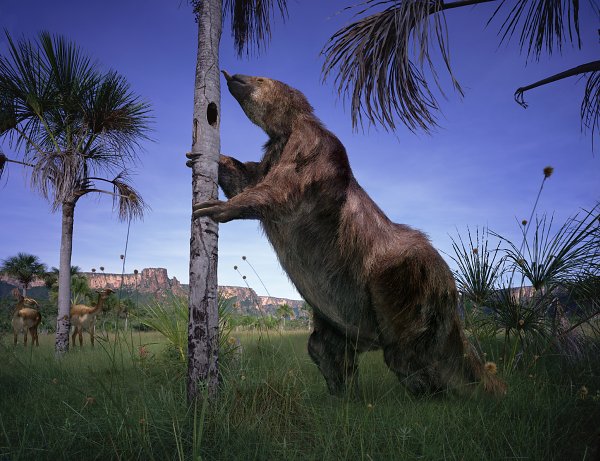
Last year, we launched a new program at La Brea Tar Pits called BREAS (Bridging Research and Education at Asphaltic Sites). La Brea Tar Pits is the most famous asphaltic fossil site in the world, but it is not the only one, and these types of sites can be even more important in places like the neotropics where we don’t find many Ice Age fossils. Moreover, paleontologists in a lot of tar pit-containing countries (like Ecuador, Peru, Venezuela, and the Caribbean) don’t have the resources that scientists in the U.S. What future research can we look forward to? We know this because the shape of the fossil deposit is much, much different than we see at La Brea Tar Pits (wide and flat, instead of cone-shaped), and we don’t find the remains of all the tiny plants and animals that would normally get trapped in a surface asphalt puddle. The Tanque Loma deposit is completely different: instead of forming pools to trap the animals, the asphalt at this site seeped into the sediments-and the bones-after the animals died and were buried. The La Brea Tar Pits are famous for trapping plants and animals in sticky asphalt seeps. The main scenario involves a large herbivore (say, a bison or a mammoth) getting stuck in one of these super-sticky puddles and then attracting a pack of hungry dire wolves or a group of saber-toothed cats, many of which ended up getting stuck as well. Birds, plants, and even insects got trapped and preserved by the asphalt as well! How is this location different from La Brea Tar Pits? Scientists like me hope that our research into this last extinction event can help protect threatened species and ecosystems today. Modern sloths are ecologically very unlike their extinct giant cousins, which lived on the ground and got to be the size of elephants. However, the Ice Age extinctions that wiped out these sloths and the other giant mammals likely resulted from the same combination of factors that we see threatening species today-rapid climate changes and human impacts. In fact, this last major extinction event probably represents the first pulse in the extinction crisis that we are in today. How does this past extinction compare/contrast with today's modern sloth species, and the challenges they face (climate change, habitat loss, deforestation, etc.) We hypothesize that a similar thing might have happened with the sloths. One of the unique things about this site, however, is that it also contains huge amounts of plant material that appears to be gut contents or coprolites (fossil feces) of the ground sloths. Many years ago, one of my co-authors had seen a herd of hippopotamuses perish of disease in a waterhole after it got contaminated with their feces. The best conclusion we could come to based on our data was that the sloths were gathered in some sort of watering hole and died from drought, disease, or some combination of the two. This scenario is seen throughout the fossil record-from prehistoric amphibians to dinosaurs to ancient rhinos. This is different from modern tree sloths, which are solitary, and is a behavior that has been occasionally suggested for giant sloths, but never backed up with data before. This suggests that at least some giant sloth species might have been gregarious (“social”). What does that tell us about their behavior that we didn’t know before? We concluded that the most likely explanation is that many sloths gathered here together (everything from tiny babies to big old adults), and died more or less at the same time. Why are there so many sloth bones found in this spot? Lindsey recently took the time to dig into her findings from this research. Unfortunately, it was this very behavior that might have lead to the their demise.ĭr.

The study suggests they were very social and liked to gather in groups, near waterholes. The find revealed how giant sloths lived, ate, and even how they might have died. The results of their research are published in the journal Palaeogeography, Palaeoclimatology, Palaeoecology. Lindsey, and a team of researchers, found a treasure trove of 22 giant ground sloth specimens that perished during the Pleistocene in Ecuador. La Brea Tar Pits Assistant Curator Emily L.

home, we aren’t the only place where sloths roamed!

might feel a certain pride that these animals called L.A. One of the most beloved is the giant ground sloth, a large herbivore that grew to be the size of a modern elephant. While L.A. The titans of the Tar Pits include mammoths, saber-toothed cats, giant ground sloths, and many more.


 0 kommentar(er)
0 kommentar(er)
